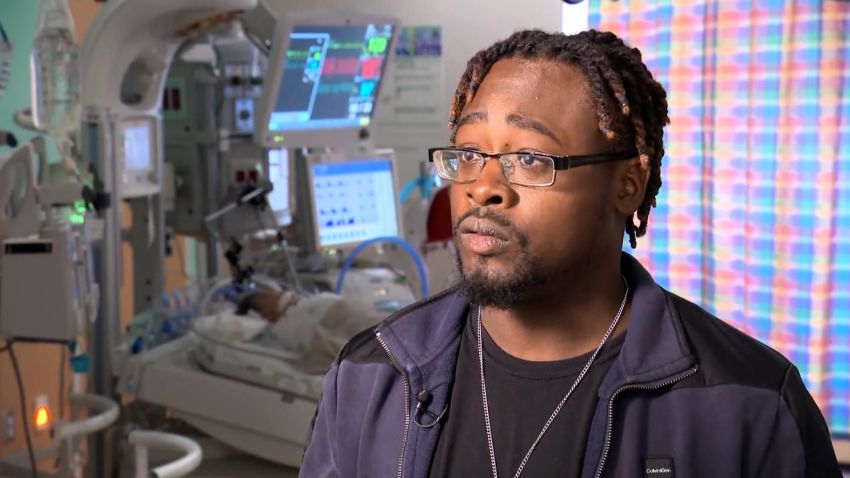Editor’s Note: Moira Szilagyi, MD, PhD, FAAP, is the president of the American Academy of Pediatrics. The views expressed in this commentary belong to the author. View more opinion at CNN.
Across the country, some hospitals report they are inching toward 100% of their capacity to care for sick children. Emergency departments are crowded and wait times can be very long. This is not just inconvenient. While most children with respiratory syncytial virus (RSV), influenza, Covid-19 and other viral illnesses do well with rest and care at home, some need critical medical support. And the overwhelmed health system means some families may not be able to get the care their child requires for a medical emergency.

Let’s be clear: This crisis is not simply due to an unusual surge in a few viruses circulating simultaneously. Several factors have led us to this moment – the respiratory illnesses, a crisis in mental health and reduced hospital capacity. But the underlying cause is a more fundamental issue: This is what happens when we fail to invest in children’s health care. As a pediatrician and a grandmother, I am heartbroken. This is unacceptable to me and my colleagues in the American Academy of Pediatrics (AAP).
We have solutions. Some are immediate; others are long-term. Let’s start with the big picture.
First, we must invest in resources to care for children with mental health conditions. The AAP and more than 130 organizations recently urged the Biden administration to declare a national emergency in children’s mental health, which would galvanize funding and support access to care.
Many emergency department and inpatient beds are occupied by children and adolescents who have mental health needs. This is not because these are necessarily the right places for them to receive mental health care. It is because there is literally no other place to send them.
Second, we need investment in pediatric health care capacity. This includes raising Medicaid payment rates to at least what Medicare and private insurance pay for the same services. Since more than half of all US children are enrolled in Medicaid, payment disparities are reducing access to care for children in every community, from the rural doctor’s offices to the big-city children’s hospitals. It is no wonder that we are seeing pediatric units in rural and community hospitals closing. Even before the pandemic, pediatric inpatient beds had decreased by more than 19%, with rural areas seeing even greater losses of pediatric beds, at 26%.
Third, we must address the chronic understaffing of pediatric clinicians, including respiratory therapists and nurses, and the additional shortages created when clinicians left their jobs during the pandemic. Pediatricians and all those who care for children will go to great lengths to take good care of them, but chronically overburdened and understaffed systems take a heavy toll on clinicians and also place children in need of care at risk. We need to expand the pediatric health care workforce and improve our support of them.
All of these investments are significant, but they are essential to support the health of our youngest generation and help them to thrive.
In the short term, we need funding to allow pediatric clinicians to rapidly ramp up services to care for the children in crisis, from the doctor’s office to the hospital. During the worst of the pandemic, pediatric clinicians stepped up to provide care to adults when hospitals were overwhelmed with adult patients. Adult resources can help care for children and adolescents now.
For parents, I can offer some reassurance – and some advice. If you or your family have not been vaccinated for influenza or Covid-19 (including boosters), now is a crucial time to do so. Regular hand washing, staying home if you are sick and covering your mouth and nose to reduce viral transmission from coughs and sneezes will all help.
Most illnesses can be treated at home, but if you are worried about your child’s symptoms, don’t hesitate to call your child’s pediatrician. Try to be patient, as they are most likely fielding a high number of calls from other parents and caregivers.
Meanwhile, the AAP offers some resources on HealthyChildren.org on RSV, influenza and Covid, including videos of troubled breathing that can indicate a child in need of medical care for RSV.
As we navigate the next few months, pediatricians will do what we’ve always done: We will show up for our patients and their families. We will diagnose and treat these viruses, reassure worried parents and support the mental health of children and teens. But we need help. We must use this moment to make rapid investments and to set the stage for broader reforms.
A parent concerned enough about their child’s symptoms to seek care in an emergency room should not have to worry they’ll be turned away. Let’s use this moment to make sure we can care for all children in all the places they turn to.




